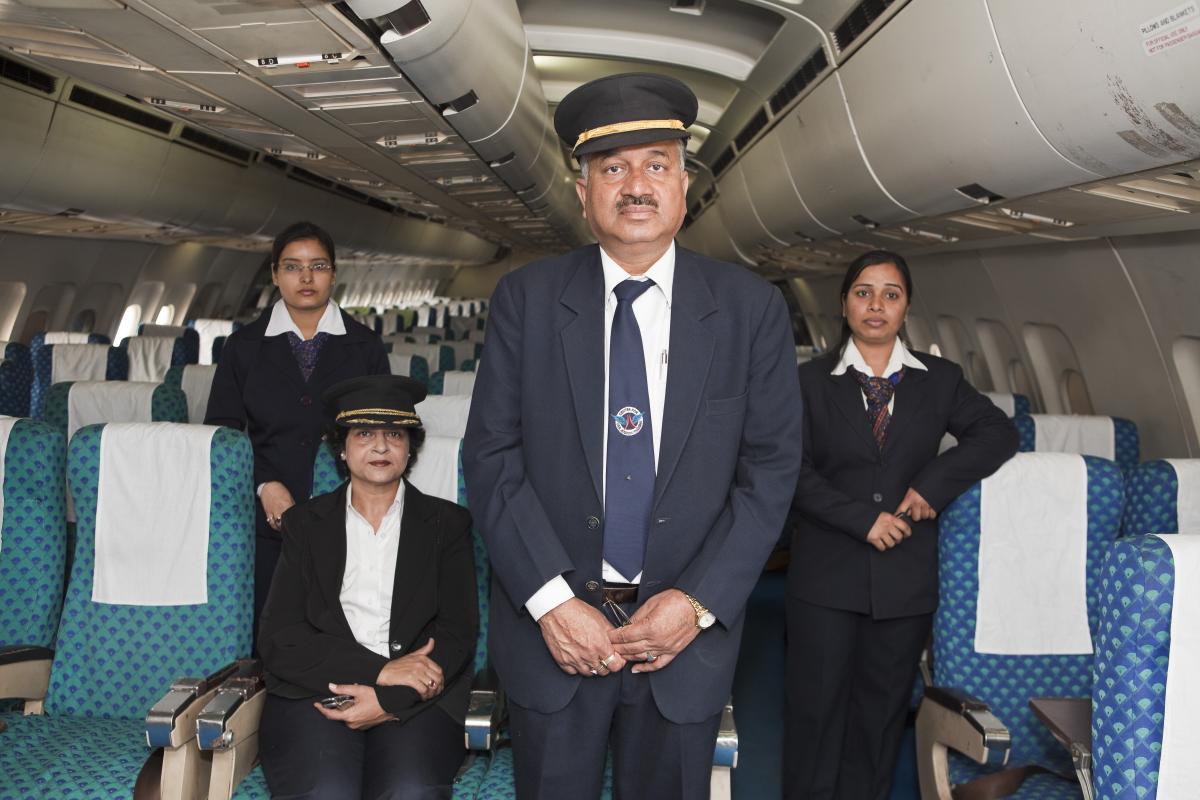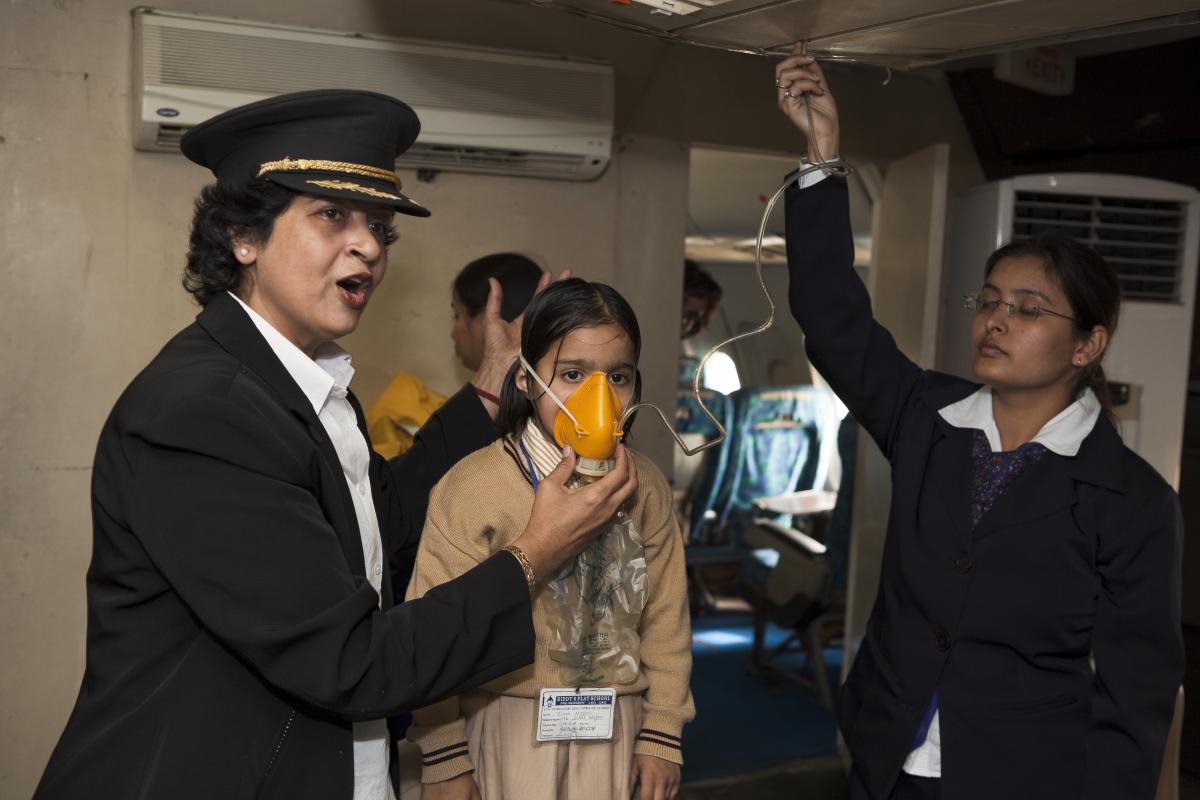Flight 300 to Mumbai
Captain Gupta takes Indian schoolchildren and other curious passengers on a unique educational trip.
I’m boarding an Airbus A-300 in Delhi. The flight’s stated destination is Mumbai, but with one wing and a third of the fuselage missing, I know this plane will never take off. Our pilot, former airline engineer Captain Gupta, bought the Airbus from Indian Airlines in 2003, then spent many years re-assembling it in his garden, about five miles from Delhi International Airport, in order to share his passion for air travel with as many people as possible.


You seem to enjoy a good story
Sign up to our infrequent mailing to get more stories directly to your mailbox.
Despite the fact that India’s domestic airline industry has boomed in the last few years, the vast majority, 96%, of Indians have never flown. Captain Gupta’s mission is to give Indians a chance to experience the interior of a plane and to learn a little about how aircraft operate.


The staff issue boarding passes to all travellers and explain how to find the right seat in the right plane. Once today’s passengers, a lively group of schoolchildren, are all onboard, and the door is shut and sealed, the chief flight attendant, Mrs Gupta (also a professor of international studies at Delhi University), welcomes everybody and begins the safety presentation by explaining how to fasten the seat belts.


Mrs Gupta and the cabin crew cover all of the aircraft’s safety features, including the oxygen masks and the emergency lifejackets. This is perhaps the only airline whose safety presentation concludes with a quiz, but the children have been paying attention and shout out the answers with great enthusiasm. Refreshments follow as the flight attendants go up and down the aisles with their trolleys, serving biscuits and toffees.
Then some music is played over the intercom, and some of the kids are encouraged to get up and dance in the aisle. Quite what this has to do with flying is beyond me, but everyone is having a splendid time. The children are invited to visit the cockpit in small groups, and Mrs Gupta explains that although trains and buses have one driver, a plane has three: the pilot, the co-pilot and the auto-pilot.


The flight apparently concludes in disaster, as the passengers all leave via an emergency slide, but the children are delighted nonetheless. Snacks and drinks are then served, and videos are shown. I imagine that these students will never forget this outing, and that Captain Gupta has converted 50 more future passengers on his mission to educate the public and to demystify the business of air travel.

